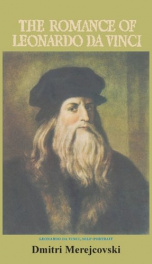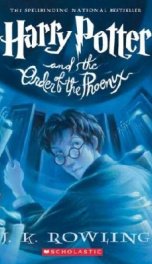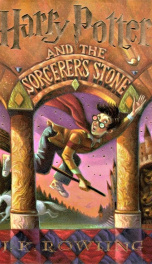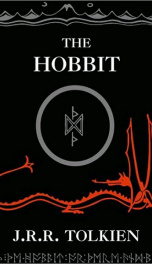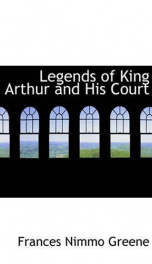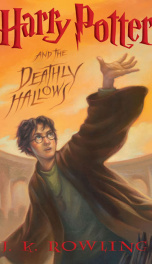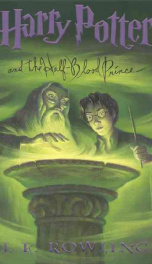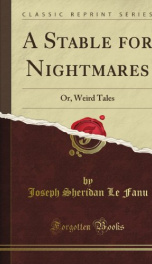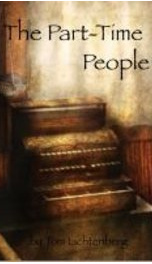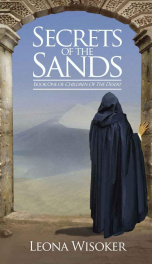Benjamin of Tudela
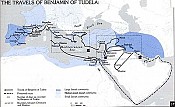
Benjamin of Tudela (Hebrew: בִּנְיָמִין מִטּוּדֶלָה, pronounced [binyaˈmin mittuˈdela]) was a medieval Navarrese adventurer, sometimes called "Rabbi", who traveled through Europe, Asia, and Africa in the 12th century. His vivid descriptions of western Asia preceded those of Marco Polo by a hundred years. With his broad education and vast knowledge of languages, Benjamin of Tudela is a major figure in medieval geography and Judaism. Benjamin set out on his journey from northeast Spain around 1165, in what may have begun as a pilgrimage to the Holy Land.[1] It has been suggested he may have had a commercial motive as well as a religious one. On the other hand, he may have intended to catalogue the Jewish communities on the route to the Land of Israel so as to provide a guide to where hospitality may have been found for Jews travelling to the Holy Land, or those fleeing oppression elsewhere.[2] He took the "long road," stopping frequently, meeting people, visiting places, describing occupations and giving a demographic count of Jews in every town and country. Little is known of his early life, apart from the fact that he was from the Navarrese town of Tudela. Today, a street in the aljama (former Jewish quarter) is named after him. His journey began in the city of Zaragoza, further down the valley of the Ebro, whence he proceeded north to France, and then set sail from the port of Marseilles. After visiting Genoa, Pisa, Rome, Greece, and Constantinople, he set off across Asia, visiting Syria, Lebanon, Palestine and northern Mesopotamia (which he called Shinar) before reaching Baghdad. From there he went to Persia, then cut back across the Arabian Peninsula to Egypt and North Africa, returning to the Iberian Peninsula in 1173.[1] In all he visited over 300 cities, including many of importance in Jewish history such as Susa, Sura, and Pumbedita in southern Persia. In addition he included information on many more areas he heard about on his travels, including China and Tibet, and gave details on cultures such as that of Al-Hashishin, the hemp smokers, thus introducing Western Europeans to people and places far beyond their experience. He described his years abroad in a book, The Travels of Benjamin (מסעות בנימין, Masa'ot shel Rabi Binyamin, also known as ספר המסעות, Sefer ha-Masa'ot, The Book of Travels). This book describes the countries he visited, with an emphasis on the Jewish communities, including their total populations and the names of notable community leaders. He also described the customs of the local population, both Jewish and non-Jewish, with an emphasis on urban life there. There are also detailed descriptions of sites and landmarks he passed along the way, as well as important buildings and marketplaces. Benjamin is noted for not only telling facts, but citing his sources; historians regard him as highly trustworthy. However some of his facts are based on earlier incorrect writers, Benjamin's identification of the Laish (Tel Dan) with Baniyas along with Philostorgius, Theodoret, and Samuel ben Samson was incorrect.[3][4][5] While Eusebius of Caesarea accurately placed Dan/Laish in the vicinity of Paneas at the fourth mile on the route to Tyre.[6] The Travels of Benjamin is an important work not only as a description of the Jewish communities, but also as a reliable source about the geography and ethnography of the Middle Ages. As well some modern historians credit Benjamin with giving very accurate descriptions of every-day life in the Middle Ages. Originally written in Hebrew his itinerary was translated into Latin and later translated into most major European languages, receiving considerable attention in the sixteenth century. The name Benjamin of Tudela was adopted by a mid-19th century traveler and author, known as Benjamin II. One of the main works of Mendele Mocher Sforim, a major 19th century Russian Jewish writer, is the 1878 Masoes Benyomen Hashlishi (מסעות בנימין השלישי) (The Wanderings of Benjamin III), which is considered something of a Jewish Don Quixote and whose title is clearly inspired by Benjamin of Tudela's book. A street in Jerusalem's Rehavia neighborhood, Rehov Binyamin Mitudela (רחוב בנימין מטודלה), is named after him - as is a street in the former Jewish Quarter of his hometown Tudela. The well-known Israeli poet Nathan Alterman wrote a poem about Benjamin of Tudela, which was set to music by Naomi Shemer and was often heard on the Israeli radio.[7]
do you like this author?
What readers are saying
What do you think? Write your own comment on this book!
write a commentWhat readers are saying
What do you think? Write your own comment on this author!
write a commentBook list
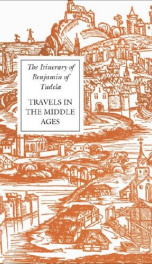
The Itinerary of Benjamin of Tudela
Series:
Unknown
Year:
Unknown
Raiting:
4.5/5
Benjamin of Tudela, from Spain, is a famous world traveler of the 12th century. He started his journey from northeast Spain around 1165. His travel began in the city of Zaragoza, further down the valley of the Ebro, whence he went north to France, and then set sail from the port of Marseilles. After visiting Genoa, Pisa, and Rome in present-day Italy; Greece; and Constantinople, he set off across Asia. He visited Syria, Lebanon, Land of Israel, and northern Mesopotamia before he came to Baghdad. From there he went to Persia, then cut back across the Arabian Peninsula to Egypt and North Africa, returning to the Iberian Peninsula in 1173. In general Benjamin visited over 300 cities, including many of importance in Jewish history, such as Susa, Sura, and Pumbedita in southern Persia. Besides, he collected information about many more areas which he heard about on his travels, including China and Tibet. He recorded details on cultures such as that of Al-Hashishin, the hemp smokers, introducing Western Europeans to people and places far beyond their experience.
Some modern historians consider him as the person who gave the most precise description of every-day life in the Middle Ages. Originally the book was written in Hebrew. Later it was translated into Latin and then became an extremely popular piece of Jewish literature in many languages. The modern reader might think of it as something alien and unusual. But the author actually intended to give his contemporaries an actual account of his journeys. What exactly did Benjamin plan to reach when he started out on his awesome travel? At first, probably nothing but a pilgrimage to the Holy Land, which despite the Crusades, retained a magic attraction for the pious Jew. A pilgrimage-an Aliyah-probably with the thought to stay there for the rest of his life. But the fact is that he did take the long road, sometimes making stops, meeting people, visiting places, describing professions and giving a demographic count of Jews in every town and country. This book is outstanding. Actually, this is travel diary of Benjamin. He brightly describes the different communities he visits throughout Spain and the Middle East. This is a work which gives insight into Jewish communal life in the Middle Ages.
This book describes the countries he visited, with an emphasis on the Jewish communities, including their total populations and the names of notable community leaders. Benjamin also described the customs and traditions of the local population, both Jewish and non-Jewish, with an emphasis on urban life. He gave detailed descriptions of sites and landmarks seen along the way, as well as important buildings and marketplaces. This book is important not only because it has detailed descriptions of the Jewish communities, but also as a trustworthy source about the geography and ethnography of the Middle Ages. "The Itinerary of Benjamin of Tudela" is really worth reading. Anyone who prefers primary historical sources will enjoy reading this book as it is full of true facts and exciting details of the past.
Show more
add to favoritesadd In favorites
Some modern historians consider him as the person who gave the most precise description of every-day life in the Middle Ages. Originally the book was written in Hebrew. Later it was translated into Latin and then became an extremely popular piece of Jewish literature in many languages. The modern reader might think of it as something alien and unusual. But the author actually intended to give his contemporaries an actual account of his journeys. What exactly did Benjamin plan to reach when he started out on his awesome travel? At first, probably nothing but a pilgrimage to the Holy Land, which despite the Crusades, retained a magic attraction for the pious Jew. A pilgrimage-an Aliyah-probably with the thought to stay there for the rest of his life. But the fact is that he did take the long road, sometimes making stops, meeting people, visiting places, describing professions and giving a demographic count of Jews in every town and country. This book is outstanding. Actually, this is travel diary of Benjamin. He brightly describes the different communities he visits throughout Spain and the Middle East. This is a work which gives insight into Jewish communal life in the Middle Ages.
This book describes the countries he visited, with an emphasis on the Jewish communities, including their total populations and the names of notable community leaders. Benjamin also described the customs and traditions of the local population, both Jewish and non-Jewish, with an emphasis on urban life. He gave detailed descriptions of sites and landmarks seen along the way, as well as important buildings and marketplaces. This book is important not only because it has detailed descriptions of the Jewish communities, but also as a trustworthy source about the geography and ethnography of the Middle Ages. "The Itinerary of Benjamin of Tudela" is really worth reading. Anyone who prefers primary historical sources will enjoy reading this book as it is full of true facts and exciting details of the past.
Show more
Book list

The Itinerary of Benjamin of Tudela
Series:
Unknown
Year:
Unknown
Raiting:
4.5/5
Benjamin of Tudela, from Spain, is a famous world traveler of the 12th century. He started his journey from northeast Spain around 1165. His travel began in the city of Zaragoza, further down the valley of the Ebro, whence he went north to France, and then set sail from the port of Marseilles. After visiting Genoa, Pisa, and Rome in present-day Italy; Greece; and Constantinople, he set off across Asia. He visited Syria, Lebanon, Land of Israel, and northern Mesopotamia before he came to Baghdad. From there he went to Persia, then cut back across the Arabian Peninsula to Egypt and North Africa, returning to the Iberian Peninsula in 1173. In general Benjamin visited over 300 cities, including many of importance in Jewish history, such as Susa, Sura, and Pumbedita in southern Persia. Besides, he collected information about many more areas which he heard about on his travels, including China and Tibet. He recorded details on cultures such as that of Al-Hashishin, the hemp smokers, introducing Western Europeans to people and places far beyond their experience.
Some modern historians consider him as the person who gave the most precise description of every-day life in the Middle Ages. Originally the book was written in Hebrew. Later it was translated into Latin and then became an extremely popular piece of Jewish literature in many languages. The modern reader might think of it as something alien and unusual. But the author actually intended to give his contemporaries an actual account of his journeys. What exactly did Benjamin plan to reach when he started out on his awesome travel? At first, probably nothing but a pilgrimage to the Holy Land, which despite the Crusades, retained a magic attraction for the pious Jew. A pilgrimage-an Aliyah-probably with the thought to stay there for the rest of his life. But the fact is that he did take the long road, sometimes making stops, meeting people, visiting places, describing professions and giving a demographic count of Jews in every town and country. This book is outstanding. Actually, this is travel diary of Benjamin. He brightly describes the different communities he visits throughout Spain and the Middle East. This is a work which gives insight into Jewish communal life in the Middle Ages.
This book describes the countries he visited, with an emphasis on the Jewish communities, including their total populations and the names of notable community leaders. Benjamin also described the customs and traditions of the local population, both Jewish and non-Jewish, with an emphasis on urban life. He gave detailed descriptions of sites and landmarks seen along the way, as well as important buildings and marketplaces. This book is important not only because it has detailed descriptions of the Jewish communities, but also as a trustworthy source about the geography and ethnography of the Middle Ages. "The Itinerary of Benjamin of Tudela" is really worth reading. Anyone who prefers primary historical sources will enjoy reading this book as it is full of true facts and exciting details of the past.
Show more
add to favoritesadd In favorites
Some modern historians consider him as the person who gave the most precise description of every-day life in the Middle Ages. Originally the book was written in Hebrew. Later it was translated into Latin and then became an extremely popular piece of Jewish literature in many languages. The modern reader might think of it as something alien and unusual. But the author actually intended to give his contemporaries an actual account of his journeys. What exactly did Benjamin plan to reach when he started out on his awesome travel? At first, probably nothing but a pilgrimage to the Holy Land, which despite the Crusades, retained a magic attraction for the pious Jew. A pilgrimage-an Aliyah-probably with the thought to stay there for the rest of his life. But the fact is that he did take the long road, sometimes making stops, meeting people, visiting places, describing professions and giving a demographic count of Jews in every town and country. This book is outstanding. Actually, this is travel diary of Benjamin. He brightly describes the different communities he visits throughout Spain and the Middle East. This is a work which gives insight into Jewish communal life in the Middle Ages.
This book describes the countries he visited, with an emphasis on the Jewish communities, including their total populations and the names of notable community leaders. Benjamin also described the customs and traditions of the local population, both Jewish and non-Jewish, with an emphasis on urban life. He gave detailed descriptions of sites and landmarks seen along the way, as well as important buildings and marketplaces. This book is important not only because it has detailed descriptions of the Jewish communities, but also as a trustworthy source about the geography and ethnography of the Middle Ages. "The Itinerary of Benjamin of Tudela" is really worth reading. Anyone who prefers primary historical sources will enjoy reading this book as it is full of true facts and exciting details of the past.
Show more
What readers are saying
What do you think? Write your own comment on this author!
write a commentif you like Benjamin of Tudela try:
readers also enjoyed
What readers are saying
What do you think? Write your own comment on this author!
write a commentif you like Benjamin of Tudela try:
readers also enjoyed
Do you want to exchange books? It’s EASY!
Get registered and find other users who want to give their favourite books to good hands!

